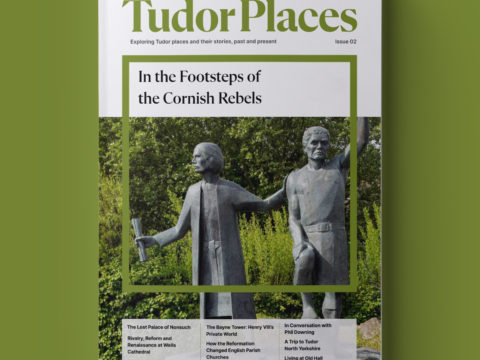Marie of Guise: Life Story
Chapter 6 : Rivals for the Regency
Within weeks of James’ death, Henry VIII had come up with the splendid notion (in his own view, at any rate) that the little Queen should be married to his son, Edward, and the kingdoms united under their children. Marie received letters from Charles Brandon, Duke of Suffolk, one of Henry’s chief councillors, promoting the scheme of the marriage and saying ‘I cannot therefore bot rejoyse and be moste glad to heare tell of your good towardness and conformytie in that bihaulfe’.
Henry was also working on the lords who had been captured at Solway, and extracting oaths from them that they would support the union. Once they had done so, they were permitted to return to Scotland to add weight to the pro-English faction and were referred to by their new English masters as “the Assured Lords”. Arran signed the Treaties of Greenwich, which would give effect to the marriage of Mary, Queen of Scots to Prince Edward. The Treasurer of Scotland, James Kirkcaldy of Grange, ratified the Treaties on Scotland’s behalf on 25 August 1543, but by this time the political landscape had changed.
Arran had a rival for the regency in the shape of Matthew Stuart (he had adopted the French spelling), Earl of Lennox. Lennox was the grandson of James III.He had spent much of his life at the French Court and as soldier in Francois I’s army and believed that he, rather than Arran, was the heir and ought thus to be Regent. His claim was based on Arran’s possible illegitimacy. Lennox hotfooted it to Scotland, arriving at Linlithgow in April of 1543, ostensibly to act in the French interest.
Regardless of who held the regency, Marie was determined to hold on to her daughter physically, whereas the Scots nobles wished her to be delivered up to guardians, who would rotate quarterly in pairs between the Earl Marischal, the Earl of Montrose, Lords Erskine, Ruthven, Livingston, Lindsay, Seton and Calder. In late March or early April of 1543 she received a letter from George Gordon, 4th Earl of Huntley, saying she could not go to Stirling without handing over the Queen. Rather than comply, Marie remained at Linlithgow.
As the summer of 1543 progressed, the Scottish Estates and those opposed to Arran and the pro-English policy grow stronger. Lennox was hoping to improve his cause by marrying Marie and thus securing both the Regency and the guardianship of the Queen.
Marie, whose primary concern was her daughter’s safety, sought to play all of the parties off against each other. She made gracious noises to the English Ambassador, Sir Ralph Sadler, and gave him reason to believe she approved of the proposed marriage of Mary and Edward. Sadler was invited to see the baby and told by Marie that ‘she knew not throughout the world any marriage could be found so proper, so beneficial and so honourable as this.’ She added, to muddy the waters, that Arran was probably false in his protestations of desiring the match, as, in reality, he wanted the baby queen to marry his own son.
Meanwhile, Marie was giving encouragement to Lennox, allowing him to think that matrimony was a possibility and backed by his men, managed to make the journey from the difficult-to-defend palace of Linlithgow to Stirling, the most formidable fortress in Scotland. Marie and Mary spent the next few years there. Once there, Marie arranged for the coronation of the little girl, which took place on 9th September in the Chapel Royal – a significant date in Scottish history: thirty years to the day from the battle of Flodden.
Even Arran and his supporters, including the Assured Lords, were growing restive under Henry VIII’s bullying tactics, and the overwhelming feeling in Scotland was pushing for a renewal of the French alliance. The Estates of Scotland rejected the Treaty of Greenwich on 11th December 1543.
Lennox, too, was playing a double game. Francois I had finally realised the threat to French interests in Scotland and sent 10,000 crowns, munitions and ships to support Carinal Beaton and Lennox as the leaders of the pro-French party. By the end of October 1543, Lennox was at Dumbarton Castle, whence the French money, together with munitions, the Legate from the Pope, and the French Ambassador had been sent. Lennox, however, refused to hand it over.
In a last ditch attempt to bring the two factions together, a new agreement was arranged between Arran and Lennox, under which Lennox would accept Arran as Governor, but Lennox failed to observe its terms. Arran now moved decisively towards France, and Lennox defected completely to England, marrying Henry VIII’s niece, Lady Margaret Douglas, who was also half-aunt to the Queen of Scots.




